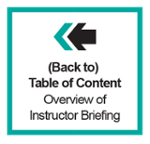Because of the COVID-19 outbreak and the need to continue to train effectively due to the pandemic restriction, BCM Institute has re-engineered its professional development training and certification program to "Blended Learning" or "BL". As we progress to the new normal, this training approach will continue to be used for Module 1 (eLearning) and Module 2, the Facilitated Online video workshop via ZOOM.
Blended Learning
Blended learning is a known approach to education that combines online educational materials and opportunities for interaction online with traditional place-based classroom methods.
It requires the physical presence (what we call a compulsory "online, blended learning workshop") of both facilitators like yourself and participants who are BCM professionals, with some elements (such as pre-reading and completion of assignments with the support of guidance notes) of participants control over time, place or pace.
The key is not to have each physical course day converted into a Module. As you are aware, this approach in training adopted after COVID-19 is ineffective in learning.
Pre-reading: It is essential that "what can be read" should be "read before the start of the course." The course will focus on the overview of the topics via the PowerPoint slides and sharing experiences and questions from the participants.
Onsite Vs Blended Learning: While participants still attend "brick-and-mortar" or onsite training courses with a facilitator present, blended learning is online facilitated "ZOOM" workshop practices are combined with computer-mediated activities (e-Learning as Module 1) when you are referring to the content and its delivery.
From 2023 onwards, all Module 1 and Module courses of the 5000 and Audit series will still be conducted online. Module 3 and Module 4 will be conducted onsite in the specific country, namely in the ASEAN countries.
How is BL Conducted?
- Blended Learning: Need to prepare pre-course work, attend a series of six online workshops and submit assignments.
- eLearning: Attend Module 1 with eLearning as learning is purely on acquiring the complete set of knowledge.
- Online workshops range from 2 to 3 hours.
- Video Conferencing Platform: ZOOM is its base platform unless provided by the client
Course Schedule: There are four RUNs for each course per year. It is usually scheduled every quarter. For example, January to March is Quarter 1. Do note that if you are teaching a particular RUN, usually marked at 2A or with the name of the specific client, it is a particular RUN for an in-house class.
RUN
- 1; 2; 3; 4
- E.g., Quarter 1 [Jan to Mar]; 2, 3; 4
- The year 2023
- "H" is for Hybrid, which is M1 and M2 being online and M3 and M3 being onsite
- "A" is for all online sessions, but the start time is 9 pm (GMT+8). It is 9 pm in Singapore but 9 am in the US.
Each Module has 2 Sessions: Lastly, for blended learning, there are two sessions for each module. For example, Module 2 Session 1 or in short, M2-S1 and Module 2 Session 2, which is M2-S2 from Module 2. It is essential to note the session as an instructor, you are required to download the PowerPoint slides for the specific session. For onsite training, Module 2 used to be Day 2.

Notification from BCM Institute's Program Admin Team: Finally, do remember that when there is any notification sent to you from the Program Admin team, there will be a course code, for example, BL-CM-3 RUN 2, and you are teaching in M2-S1.
 Objective
Objective

 Objective
Objective

 Objective
Objective![[BL-HL-CM-3-4-5] Phases Learning Roadmap CM-300-CM-400-CM-5000 Crisis Management Course Phase](https://no-cache.hubspot.com/cta/default/3893111/5ff26902-051e-4cf3-a8b2-ed16dc0af61b.png)
![2Phase BL-CM-5 Certification Logo [Cert Outside]](https://blog.bcm-institute.org/hs-fs/hubfs/PIC%20Conventional%202%20Phase%20Track%20/Blended%202%20Phase%20Course%20Track%20Pic/BL-CM%202Phase%20Track%20Pic/2Phase%20BL-CM-5%20Certification%20Logo%20%5BCert%20Outside%5D.png?width=375&name=2Phase%20BL-CM-5%20Certification%20Logo%20%5BCert%20Outside%5D.png) When you are teaching the 5000 level course, the course is broken down into "Implementer", which used to be the "300 level" course and "Manager", which is the "400 level" course. The combined course "300 plus 400" will be the "5000 levels" course or the "Expert Implementer."
When you are teaching the 5000 level course, the course is broken down into "Implementer", which used to be the "300 level" course and "Manager", which is the "400 level" course. The combined course "300 plus 400" will be the "5000 levels" course or the "Expert Implementer."![[BL-CM-3] What is a CM-300 Blended Learning?](https://no-cache.hubspot.com/cta/default/3893111/4378484c-0831-4bd5-8e68-eefd9717a50e.png)
![[BL-B-5] What is a BCM-5000 Blended Learning Course?](https://no-cache.hubspot.com/cta/default/3893111/bee690e0-6d91-4249-b41d-d9bc40e21142.png)
![Email to Program Admin Team [BCM Institute]](https://no-cache.hubspot.com/cta/default/3893111/dee56d51-0a71-4a46-99ff-0a000a9f6d62.png)
